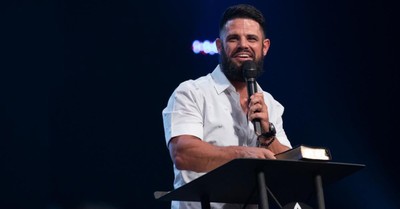June 10, 2009
In May, California voters rejected ballot measures intended to close the state’s $21 billion budget deficit. This rejection has people wondering if the Golden State will now join another venerable American institution, General Motors, in bankruptcy court.
In the run-up to the election, the governor said that, absent these measures, California would have to release 40,000 prisoners to help close the deficit. Obviously, this prospect didn’t scare the voters enough for the initiatives to pass.
Or perhaps some voters have begun to understand what we here at Prison Fellowship and others who study the criminal justice system have been saying for a long time: California incarcerates far too many people at far too high a cost.
There are approximately 170,000 inmates in California prisons. And even without the budget crisis, California is under a court order to release tens of thousands of them, virtually none of whom are prepared for life on the outside.
That court order is in response to the amazing overcrowding in California’s prisons. They hold nearly twice as many prisoners as they were designed to do. The overcrowding also led a federal appeals court to rule that the state was not providing inmates with a “constitutional level of medical and mental health care.”
So, in February, the court ordered the state to reduce the inmate population by 55,000 inmates within three years. I might add that it was all necessary because of a failure to act by the California legislature.
Having served as the attorney general of Virginia, I can assure you that deciding to release prisoners is far easier said than done. The goal would be to identify the best candidates for early release—people who are willing and prepared to assume their place as a contributing and law-abiding member of society.
The best way to do this is to ask yourself: Who belongs in prison in the first place? Who is so dangerous that you must spend $43,000 per year to feed, clothe, and house them behind bars? But whom can we supervise safely in the community using ankle bracelets and similar technology for about $1,500 a year?
Obviously, California officials and the California legislators didn’t ask these questions. Its automatic answer to anything having to do with crime and corrections was simply, “Lock ‘em up and throw away the key.”
Now the prospect of insolvency and the threat of legal sanctions has the state preparing to do an abrupt about face. I cannot imagine that anyone feels confident about the release of this many inmates under these conditions.
Things have played out as Prison Fellowship and Justice Fellowship predicted they would. But my purpose isn’t to say “we told you so.” Instead, it’s to point to a better way. And not just for California. Virtually every state is dealing with prison overcrowding and soaring corrections budgets.
We have to change how we do corrections—reserving costly prison space for truly dangerous offenders, holding offenders accountable to repay their victims, and preparing ex-prisoners to become productive citizens.
Easy to do? No. Worth the effort? Absolutely.
This commentary was delivered by PFM President Mark Earley.
Chuck Colson’s daily BreakPoint commentary airs each weekday on more than one thousand outlets with an estimated listening audience of one million people. BreakPoint provides a Christian perspective on today’s news and trends via radio, interactive media, and print.










